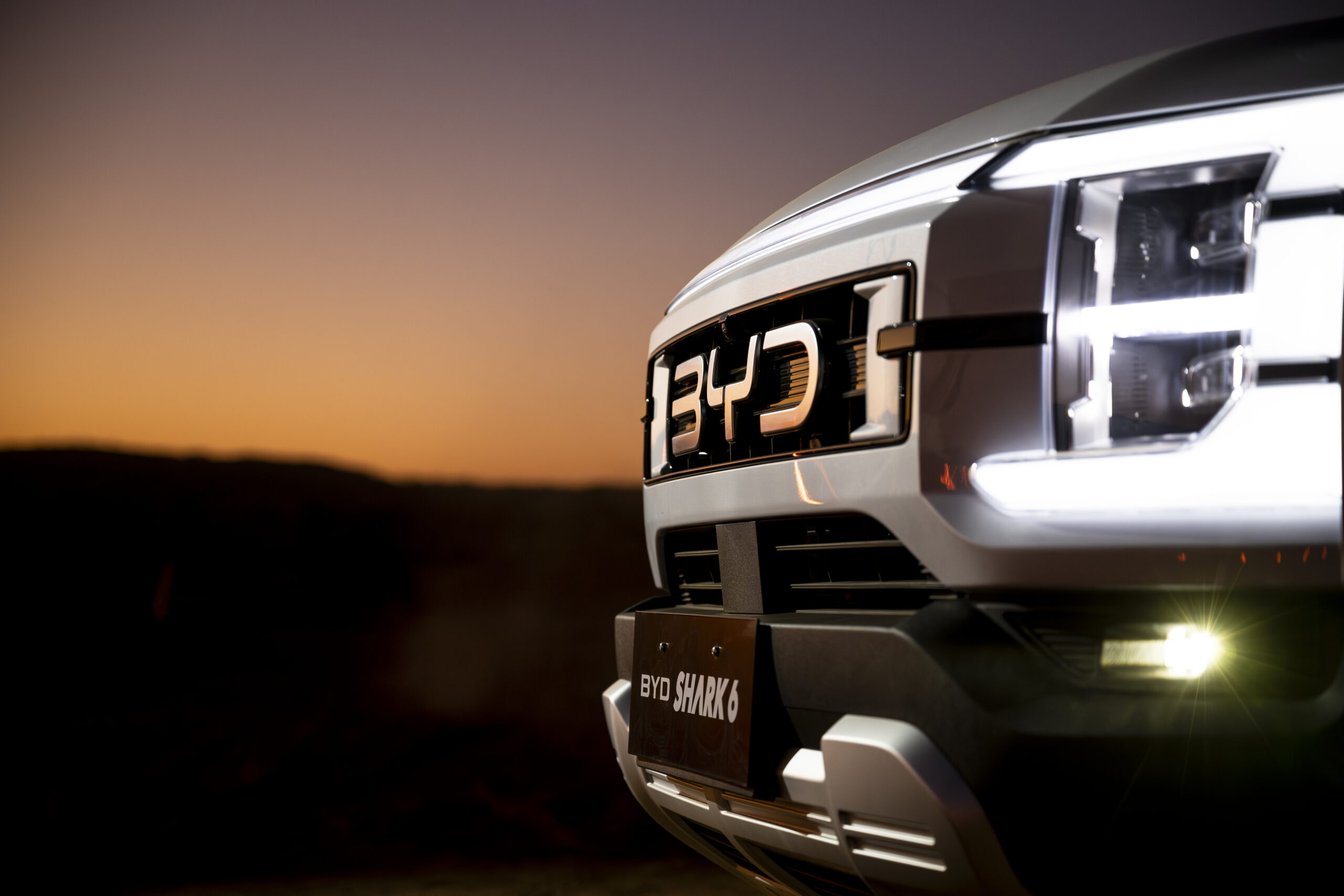Support CleanTechnica’s work through a Substack subscription or on Stripe.
Last September 22, CleanTechnica had a chance to chat with Akshay Prasad, principal at Arthur D. Little Southeast Asia’s Automotive & Manufacturing Practice, about developments in the Philippine electric vehicle market. The discussions revolved around the local electric vehicle industry’s growth from an analyst’s perspective.
Here are nine questions I think are relevant to CleanTechnica readers.

What are the key impacts of the new Philippine Department of Energy (DoE) reclassification of electric vehicles and hybrids on both consumers and the industry?
The DoE’s September 2025 reclassification expands EV categories from four to six, now explicitly including Plug-in Hybrids, Range Extender EVs, and Fuel Cell EVs alongside Battery EVs, Hybrid EVs, and Light EVs. This harmonizes definitions under EVIDA and removes confusion around tax exemptions and zero VAT ratings.
For consumers, this means wider choice and clearer eligibility for incentives. PHEVs now qualify explicitly, which appeals to the 70% of potential adopters who cite infrastructure gaps and range anxiety as concerns. We could see hybrid registrations increase by 25% in 2026 as more models enter the market.
For the industry, standardized classifications improve sales tracking through the Land Transportation Office and attract more OEM investment. With registrations already hitting record highs in 2025, this clarity could drive a 15-20% year-on-year adoption uplift, though enforcement will be critical to prevent misclassification loopholes.
What is the most critical step the Philippines can take to solve its charging infrastructure challenges?
The most critical step is implementing mandatory public-private partnerships with performance-based incentives. With only 962 public charging stations as of spring 2025 and 80% concentrated in Metro Manila, the Philippines lags far behind Thailand’s 5,000-plus stations despite CREVI’s target of 7,300 by 2028.
The government should offer tax credits up to 50% on capital expenditure for malls, highways, and local government units deploying Level 2 and DC fast chargers. Integration with existing infrastructure, like SM Supermalls’ 200-station rollout in 2025, should be accelerated, while phased mandates could require 20% of fuel stations to add EV ports by 2026.
This approach, modeled on Vietnam’s success in doubling stations via subsidies, could triple deployment by 2027. Prioritizing inter-island highways will be crucial to support the growing four-wheeler market and reduce range anxiety nationwide.
Beyond domestic policies, where can the Philippines best position itself within ASEAN’s growing EV ecosystem?
The Philippines can carve out a strategic niche as the regional hub for commercial and light-duty EV assembly, while leveraging its position as one of the world’s largest nickel producers. ASEAN’s EV market, valued at $7.84 billion in 2024 and growing at 7.2% annually, offers significant opportunities.
The country should position itself as a midstream processor in the nickel-to-battery value chain, attracting $1-2 billion in foreign direct investment for cathode plants. Additionally, with about 3% of global cobalt production, the Philippines could produce Nickel Manganese Cobalt Oxide-based cells.
Commercial EV leadership is another opportunity, with local firms like Mober leading e-fleet deployment in light commercial vehicles and two-wheelers for export to Vietnam and Malaysia. By joining ASEAN’s EV battery standardization pact and leveraging free trade agreements, the Philippines could become the “EV integrator” for the region, capturing 10-15% of regional EV value.
What are the biggest challenges to making EVs more affordable and moving them from a luxury item to a practical choice for more Filipinos?
The primary challenge is the high upfront cost. EVs average P2.2 million ($38,000) compared to P1 million ($17,000) for equivalent internal combustion engine vehicles, limiting penetration to just 2% of total 2025 sales. Battery costs represent 40% of the vehicle price, and current subsidies only cover 5-10%.
Infrastructure remains a critical barrier. With approximately one charging station per 110,000 people, range anxiety is a legitimate concern that makes EVs impractical for many potential buyers. The sparse network, concentrated heavily in Metro Manila, limits viability outside urban centers.
Financing and awareness also need improvement. Only 30% of consumers understand EV benefits, and green loans carry interest rates of 8-10% compared to 6% for traditional vehicles. Addressing these gaps through better financing options, expanded subsidies, and consumer education will be essential to democratize EV adoption.
Do you think hybrids will serve as a crucial transitional technology, or will the market quickly shift to pure battery EVs?
Hybrids will serve as a crucial bridge, not a fleeting phase, especially in the Philippine context. While BEVs held 75% of EV sales in H1 2025, hybrids and plug-in hybrids grew 40% year-on-year to capture 25% share, driven by models like Toyota’s Corolla Cross.
The DoE reclassification’s explicit inclusion of PHEVs and HEVs in unified reporting enhances accuracy and provides these vehicles with clear tax incentives. This could inflate “EV” sales figures by 15-20% and better inform policy adjustments through EVAP’s tracking systems.
A quick shift to pure BEVs is unlikely given infrastructure lags and grid reliability concerns. With under 1,000 charging stations and grid volatility, hybrids’ fuel backup suits the 70% of Filipinos who drive 50-100 kilometers daily. By 2030, hybrids could claim 40% of electrified vehicle sales before gradually transitioning to BEVs as battery costs drop through nickel localization.
How can the Philippines strategically use its nickel resources to move up the EV supply chain and become a key player in the region?
The Philippines produced 430,000 metric tons of nickel in 2024, representing 25% of global supply, yet exports 90% as raw ore, capturing minimal value. Moving up the value chain requires enforcing export bans on raw ore and channeling output to HPAL refineries, such as Coral Bay’s expansion to 60,000 metric tons of MHP annually.
The country should attract $5 billion in foreign direct investment for cathode production and gigafactories through incentives like the CREATE Act. Strategic partnerships with global battery manufacturers for “green nickel” certification would address ESG compliance issues that Indonesian producers struggle with.
The Philippines should also explore battery recycling capabilities. With 80% of current vehicles using lead acid batteries, partnering with technology licensors could establish midstream processing leadership through collection hubs. These capabilities could later extend to EV battery recycling, offering an innovative path forward as the country catches up to Thailand and Indonesia’s more advanced EV ecosystems.
How can the government’s jeepney modernization program be better aligned with the clean energy transition to promote e-jeepneys and e-tricycles?
The Public Utility Vehicle Modernization Program has electrified only 5% of 220,000 jeepneys, though e-jeepney deployments reached 1,000 units in 2025. The key is overhauling financing by expanding the LTFRB’s P300,000 ($5,200) loans to zero-interest for e-fleets, covering 80% of the P2.5 million ($43,000) e-jeepney cost through partnerships with the Development Bank of the Philippines.
Infrastructure development is equally critical. The government should mandate charging stations at depots, targeting 500 stations via CREVI, while offering route-based subsidies of P50,000 ($860) per unit for high-traffic lines. Scaling the e-tricycle pilots to 20,000 units through the DoE’s E-Trike Project would complement jeepney electrification.
Supporting local assembly plants like LCS-EMON, which has 500 units per month capacity, with tax holidays would integrate well with PUVMP’s Euro 4+ standards. These combined efforts could electrify 30% of public transport fleets by 2030, cutting urban emissions by 20% while creating 50,000 jobs.
How can the Philippines ensure its electric grid and increasing use of renewables can support a growing EV fleet without creating new issues?
The grid, currently 80% fossil-dependent, faces 10–15% peak load strain from a projected 100,000 EV fleet by 2030. While renewables reached 22% in 2024, the target is 35% by 2030 and 100% renewable-powered EV charging by 2040. Smart grid upgrades are essential, including vehicle-to-grid pilots like Meralco’s 2025 trials for off-peak charging to balance demand spikes.
Accelerating renewable energy deployment is critical. Adding 5 gigawatts of solar and wind capacity by 2027 through feed-in tariffs could power 50% of EV charging renewably, preventing blackouts. This must be paired with grid capacity planning to avoid straining the Visayas and Mindanao regions.
Policy safeguards like time-of-use pricing at P5-10 ($0.09-0.17) per kilowatt-hour during off-peak hours and CREVI’s grid impact assessments will be crucial. With integrated planning, the Philippines could support 500,000 EVs by 2035, enhancing grid resilience while advancing clean energy goals without creating new vulnerabilities.
How will the extended zero-tariff policy affect the dominance of Chinese brands like BYD in the Philippine market?
The zero-tariff extension through 2028 is a game-changer for Chinese brands like BYD.
They already command over 40% of BEV imports in the first half of 2025, and eliminating import duties could reduce prices by 10-15%, making EVs more accessible in the P1.5-2.5 million ($26,000-$43,000) segment where traditional vehicles still dominate.
This positions BYD to potentially capture 60-70% of projected EV growth as sales climb toward 20,000 units in 2025, up from just 4,000 in 2024. With their plans for local assembly targeting 10,000 units annually by 2027, possibly through partnerships like ACMobility, their market lead will only strengthen.
However, the government should balance this with R&D grants and localization incentives for domestic players to avoid over-reliance on Chinese imports, similar to what we’ve seen in Indonesia. The policy cements BYD’s lead, but smart complementary policies can ensure a healthier, more diverse ecosystem.
Sign up for CleanTechnica’s Weekly Substack for Zach and Scott’s in-depth analyses and high level summaries, sign up for our daily newsletter, and follow us on Google News!
Have a tip for CleanTechnica? Want to advertise? Want to suggest a guest for our CleanTech Talk podcast? Contact us here.
Sign up for our daily newsletter for 15 new cleantech stories a day. Or sign up for our weekly one on top stories of the week if daily is too frequent.
CleanTechnica uses affiliate links. See our policy here.
CleanTechnica’s Comment Policy




